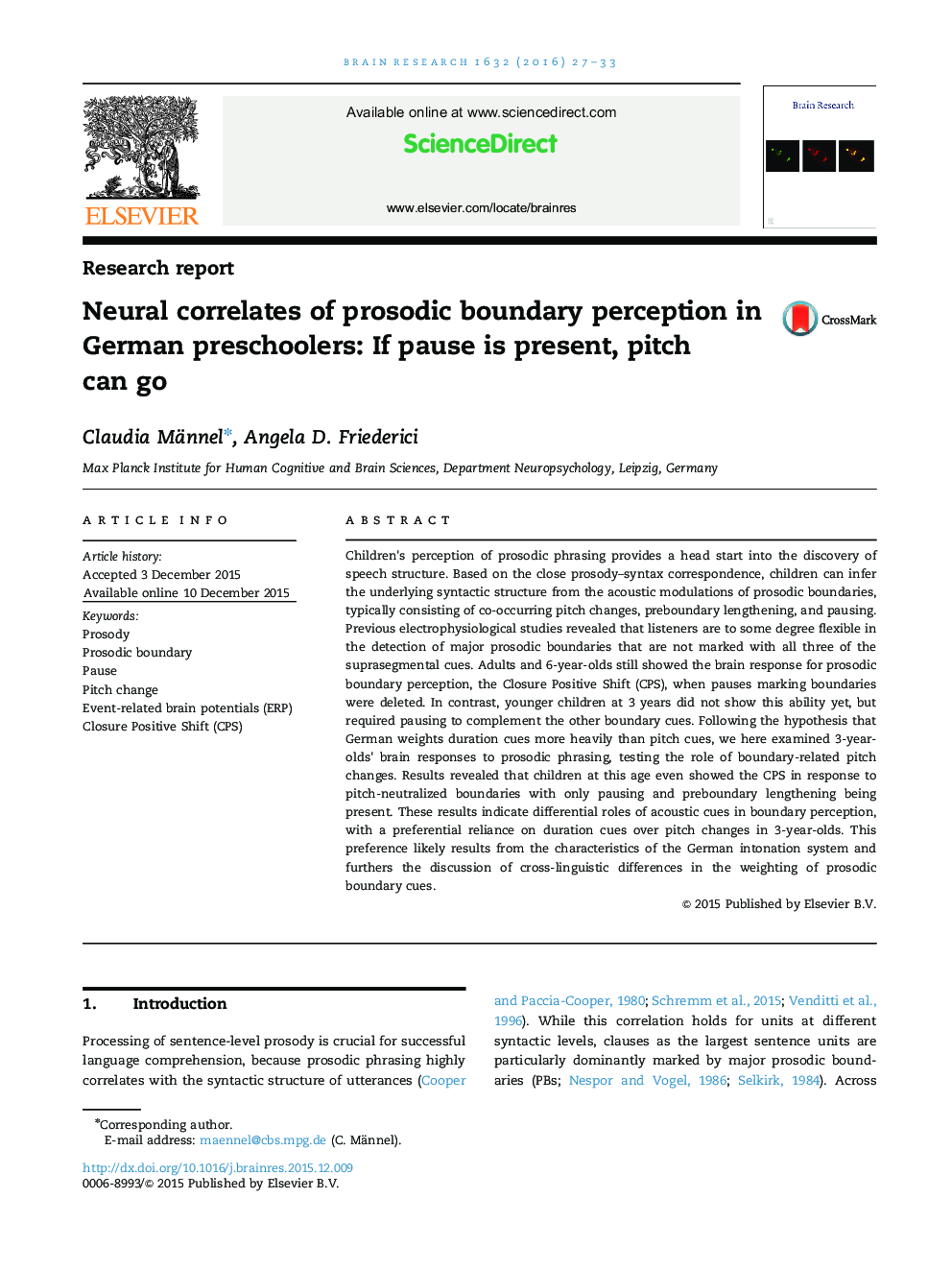| کد مقاله | کد نشریه | سال انتشار | مقاله انگلیسی | نسخه تمام متن |
|---|---|---|---|---|
| 4323692 | 1613808 | 2016 | 7 صفحه PDF | دانلود رایگان |
• We test the role of pitch rise in German children׳s perception of prosodic phrasing.
• We examine the brain response Closure Positive Shift to prosodic boundaries.
• 3-year-olds show Closure Positive Shift to boundaries without boundary pitch.
• Results are in contrast to boundary perception without boundary pause.
• This suggests less reliance on pitch than pauses in children׳s boundary perception.
Children׳s perception of prosodic phrasing provides a head start into the discovery of speech structure. Based on the close prosody–syntax correspondence, children can infer the underlying syntactic structure from the acoustic modulations of prosodic boundaries, typically consisting of co-occurring pitch changes, preboundary lengthening, and pausing. Previous electrophysiological studies revealed that listeners are to some degree flexible in the detection of major prosodic boundaries that are not marked with all three of the suprasegmental cues. Adults and 6-year-olds still showed the brain response for prosodic boundary perception, the Closure Positive Shift (CPS), when pauses marking boundaries were deleted. In contrast, younger children at 3 years did not show this ability yet, but required pausing to complement the other boundary cues. Following the hypothesis that German weights duration cues more heavily than pitch cues, we here examined 3-year-olds׳ brain responses to prosodic phrasing, testing the role of boundary-related pitch changes. Results revealed that children at this age even showed the CPS in response to pitch-neutralized boundaries with only pausing and preboundary lengthening being present. These results indicate differential roles of acoustic cues in boundary perception, with a preferential reliance on duration cues over pitch changes in 3-year-olds. This preference likely results from the characteristics of the German intonation system and furthers the discussion of cross-linguistic differences in the weighting of prosodic boundary cues.
Journal: Brain Research - Volume 1632, 1 February 2016, Pages 27–33
